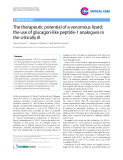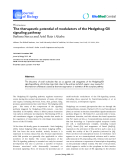
JST: Engineering and Technology for Sustainable Development
Volume 35, Issue 2, April 2025, 009-017
9
Flavonoids with Their Anti-Melanogenic Activity
from Glycyrrhiza glabra L. in Vietnam
Nguyen Thi Viet Thanh*, Hoang Tran Nhu, Tran Minh Anh
Hanoi University of Science and Technology, Ha Noi, Vietnam
Corresponding author email: thanh.nguyenthiviet@hust.edu.vn
Abstract
Glycyrrhiza glabra L. has a long-standing history in traditional medicine across both Eastern and Western
areas. The plant's phytochemials, such as glycyrrhizin, glycyrrhetic acid, and various flavonoids, offer
significant therapeutic potential. Further research could explore its application in modern drug development
for the treatment of systemic and non-systemic diseases. In the course of study on the chemical composition
of Glycyrrhiza glabra L. in Vietnam, this paper described the extraction and structure evaluation of four
compounds, including glabridin (1); 4'-O-methylglabridin (2); glabrol (3); kanzonol Y (4) as well as the melanin
inhibitory activity of these compounds. The stems of this plant were collected, identified, dried and extracted
in different polarity solvents. These substances were isolated from the ethyl acetate extract on the basis of
column chromatography combined with thin layer chromatography. Their structures were identified based on
spectroscopic evaluation and comparison of corresponding authentic compounds.
Keywords: Glycyrrhiza glabra, glabridin, flavonoid, anti-melanogenic.
1. Introduction
1
Glycyrrhiza glabra L. (G. glabra), commonly
known as licorice root, is a perennial shrub from the
Fabaceae family. The plant is native to China but is
now widely cultivated in various regions of Vietnam,
such as Tuyen Quang, Ha Giang, Dien Bien, and Son
La. In Europe and Asia, it has been used as both a
natural sweetener and a pharmaceutical [1]. According
to previous phytochemical reports, G. glabra contains
numerous bioactive compounds, including triterpenes,
saponins, flavonoids, polysaccharides, and
glycyrrhizin [2, 3]. Glycyrrhizin, a triterpenoid
glycoside, is responsible for the sweet taste of licorice
root. It consists of calcium, potassium, and magnesium
salts of glycyrrhizic acid [4]. In addition, many
saponins, such as oleanane triterpenoid saponin, have
also been isolated. Flavonoids, including flavanones,
flavonols, flavones, isoflavones, isoflavones, and
chalcones, are abundant and contribute to the yellow
color of the plant [2, 4].
Fig. 1. Some chemical constituents from Glycyrrhiza glabra L.
1
ISSN 2734-9381
https://doi.org/10.51316/jst.181.etsd.2025.35.2.2
Received: Jan 17, 2025; revised: Feb 12, 2025
accepted: Feb 20, 2025
























